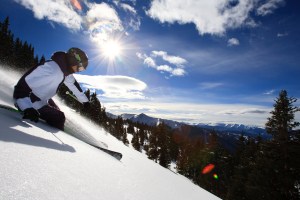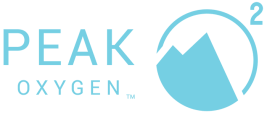Breckenridge Altitude + Ski Area Altitudes in Colorado


Winter is coming, so the slopes are calling! When the weather begins to turn and the snow starts to fall, thoughts turn to skiing and boarding in Colorado. But before you hit the slopes, it’s essential to take a look at the altitudes of different ski areas in Colorado – and how they might affect your health.
Altitude can make a big difference when it comes to skiing and boarding. The higher the altitude, the thinner the air – which can lead to problems for some people. Altitude sickness is real, and it can ruin your ski vacation if you’re not careful.
That’s why it’s crucial to know the altitudes of different ski areas in Colorado – and how those altitudes might affect your health. Here’s a look at the altitudes of some of Colorado’s most popular ski areas and tips on staying healthy at high altitudes.
What is High Altitude Sickness?
High altitude sickness is a medical condition that can occur when people travel to high altitudes – typically 8,000 feet (2,438 meters) or more above sea level. The symptoms of high altitude sickness can range from mild to severe, including headache, nausea, vomiting, shortness of breath, lightheadedness, and fatigue.
For most people, the symptoms of high altitude sickness are mild and go away after a day or two of acclimatization to the higher altitude. But for some people, the symptoms can be more severe – and even life-threatening. That’s why it’s essential to be aware of the symptoms of high altitude sickness and to know how to avoid it.
You can do a few things to prevent high altitude sickness, including gradual ascent (staying at lower altitudes for a day or two before moving higher), drinking plenty of fluids, and avoiding alcohol. And if you start to experience the symptoms of high altitude sickness, it’s important to descend to a lower altitude as soon as possible.
Altitudes of The Top Ski Areas in Colorado
Now that you know a little bit about high-altitude sickness let’s look at the altitudes of different ski areas in Colorado. Here are the altitudes of some of the most popular ski areas in Colorado:
Breckenridge Ski Area: 9,600 feet (2,926 meters) – 12,998 feet (3,963 meters)
Breckenridge is one of the most popular ski areas in Colorado, and it’s known for its high altitudes. The base elevation at Breckenridge is 9,600 feet (2,926 meters), and the summit elevation is 12,998 feet (3,963 meters). That means the air is thin at Breckenridge – which can lead to problems for some people.
Keystone Resort: 9,280 feet (2,831 meters) – 12,408 feet (3,781 meters)
Keystone is another popular ski area in Colorado, and it also offers breathtaking views – both emotionally and physically! While the resort starts out at a relatively low 9,280 feet (2,831 meters), it quickly rises to 12,408 feet (3,781 meters) at the top of the summit. That’s a lot of elevation change – and it can be tough on some people. Make sure you’re prepared for the thin air at Keystone before you hit the slopes.
Arapahoe Basin Ski Area: 10,780 feet (3,286 meters) – 13,050 fett (3,978 meters)
Arapahoe Basin is one of the highest ski areas in Colorado, with a base elevation of 10,780 feet (3,286 meters) and a summit elevation of 13,050 feet (3,978 meters). That’s more than two miles above sea level – and the air is very thin at that altitude. If you’re not used to high altitudes, Arapahoe Basin can be tough to handle! Plan accordingly if heading to the peak.
Vail Ski Resort: 8,120 feet (2,477 meters) – 11,570 feet (3,527 meters)
When you think of skiing in Colorado, Vail is probably one of the first places that come to mind – and for a good reason. Vail is one of the most popular ski resorts in the world, and it’s known for its high altitudes. The base elevation at Vail is 8,120 feet (2,477 meters), and the summit elevation is 11,570 feet (3,527 meters). This beast offers seven miles of terrain to ski!
Beaver Creek Resort: 8,100 feet (2,469 meters) – 11,440 feet (3,487 meters)
Beaver Creek is another world-famous ski resort in Colorado, encompassing three resort villages – Beaver Creek Village, Bachelor Gulch, and Arrowhead. These beautiful villages are all located at high altitudes, with the base elevation starting at 8,100 feet (2,469 meters) and rising to 11,440 feet (3,487 meters) at the summit. That’s a lot of elevation change – so be prepared!
Copper Mountain Resort: 9,712 feet (2,961 meters) – 12,312 feet (3,748 meters)
Copper Mountain is one of the first resorts to open in Colorado, and it’s one of the best-kept secrets. The base elevation is 9,712 feet (2,961 meters), and the summit is 12,312 feet (3,748 meters). That’s more than two miles above sea level! The mountain gets an average of about 305 inches of snow each season.
Loveland Ski Area: 10,800 feet (3,292 meters) – 13,010 feet (3,967 meters)
The final ski area on our list is Loveland Ski Area, located just 53 miles west of Denver. The base elevation at Loveland is 10,800 feet (3,292 meters), and the summit elevation is 13,010 feet (3,967 meters). When it comes to high altitudes, Loveland definitely packs a punch! But once you acclimate to the thin air, you’ll be able to enjoy some of the best skiing in Colorado.
Stay Safe on the Slopes with Peak Oxygen
As you can see, Colorado is home to some of the highest ski areas in the world. And if you’re not used to the altitude, it can be tough to handle. That’s why we recommend using portable oxygen at high altitudes – it can help you acclimate to the thin air and avoid altitude sickness.
At Peak Oxygen in Breckenridge, we offer a variety of portable oxygen options to help you enjoy the slopes – without worry. Whether you need a portable oxygen concentrator or a canister of emergency oxygen, we’ve got you covered. We offer portable rentals as well as oxygen bars for events at any of the ski areas listed above.
If you’re heading to the mountains this ski season, make sure you’re prepared for the high altitudes. And trust Peak Oxygen for all your portable oxygen needs!
